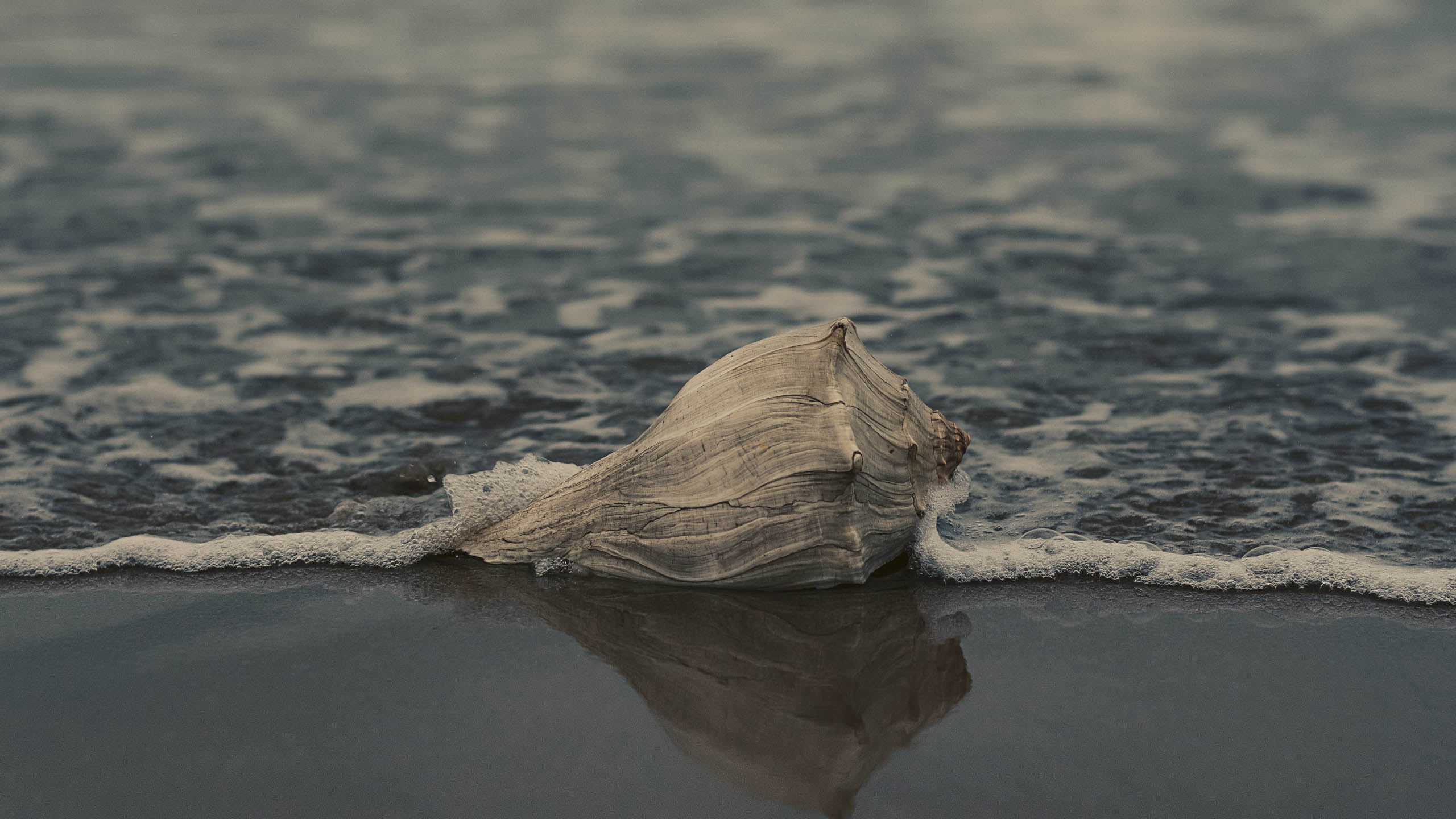posted april 15 2022 by Jord

The sound of the ocean
The definition of casual magic: holding a shell to your ear and hearing the sound of the ocean. Those large, spiral conch shells that you brought back home from holiday as a souvenir worked best. You might not have known exactly how, but you were sure that the ocean was somehow trapped inside that shell.
Rushing blood
Unfortonately, as we grow older, we lose our sense of imagination, whether we like it or not. We learnt it was not the ocean we heard. Some people argue that you hear the echoing of your blood that is rushing through the blood vessels of your ear. However, if this were true, then the sound would intensify after exercising, but studies have shown that this is not the case.
Air flow
Others say that the sound of the ocean is generated by air flowing in and out the shell. This could be explained by the fact that the sound is louder when you lift the shell slightly away from your ear, allowing more air to flow through the shell. However, this theory doesn't hold true in a soundproof room: there is no sound when you hold the shell to your ear, even though there is still air.
Ambient noise
The most likely explanation? Ambient noise from around you, that is captured inside the shell. The noise resonates inside the shell. This is also explained by the fact that each shell has its unique sound. The size and shape of the shell accentuate different frequencies. Sometimes you'll hear big waves, sometimes you'll hear small waves.
Empty coffee cup
Besides, you don't even need a shell to hear the ocean. You can also use your empty coffee cup, or simply your hand. If you vary the distance with which you place the cup or your hand near your ear, you'll see that the level of the sound will vary depending on the angle and distance the cup is from your ear. The noise around you also changes the intensity of the sound you hear inside the shell. The louder the environment, the louder the sound of the ocean. And seagulls are only an inch of imagination away.
Cochlea
Did you know that the inside of your ear – the cochlea – is shell-shaped as well? Scientists have long thought that the cochlea was shaped like this purely to save space. However, recent studies have shown that the snail shape serves a more complex function. In fact, the spiral shape acts to enhance the low frequency sounds that we use to communicate with others.
Ocean wave
When a sound wave hits the ear drum, tiny bones in the ear transmit the vibrations to the fluid of the cochlea. This is where the waves travel along a tube that winds into a spiral, which gradually decreases in width. It is comparable with an ocean wave that gets taller and narrower before it breaks at the beach. Different frequencies reach their peak at different positions along the tube. This is not influenced by the spiral shape of the cochlea. If you'd roll the tube out, it would function exactly the same.
Low frequencies
But the spiral shape does serve a specific function. Not for the average vibrational energy travelling along the tube. But as the sound wave progresses, the energy increasingly accumulates near the outside edge of the spiral, rather than remaining evenly spread across it. As low frequencies travel furthest into the tube, the effect is strongest for them. It could easily make the difference between understanding a whisper in the ear or not.
Ocean wave
Simply put, there is a shell in our ear that enables us to pick up the subtlest sound, even the mysterious sound of a sea shell. Isn't it a shame, then, that we lost our imagination throughout the years? If we disregard scientific theories about blood flow, air flow, and ambient noise, why not believe that we actually hear the ocean?
Return here to the blogs


